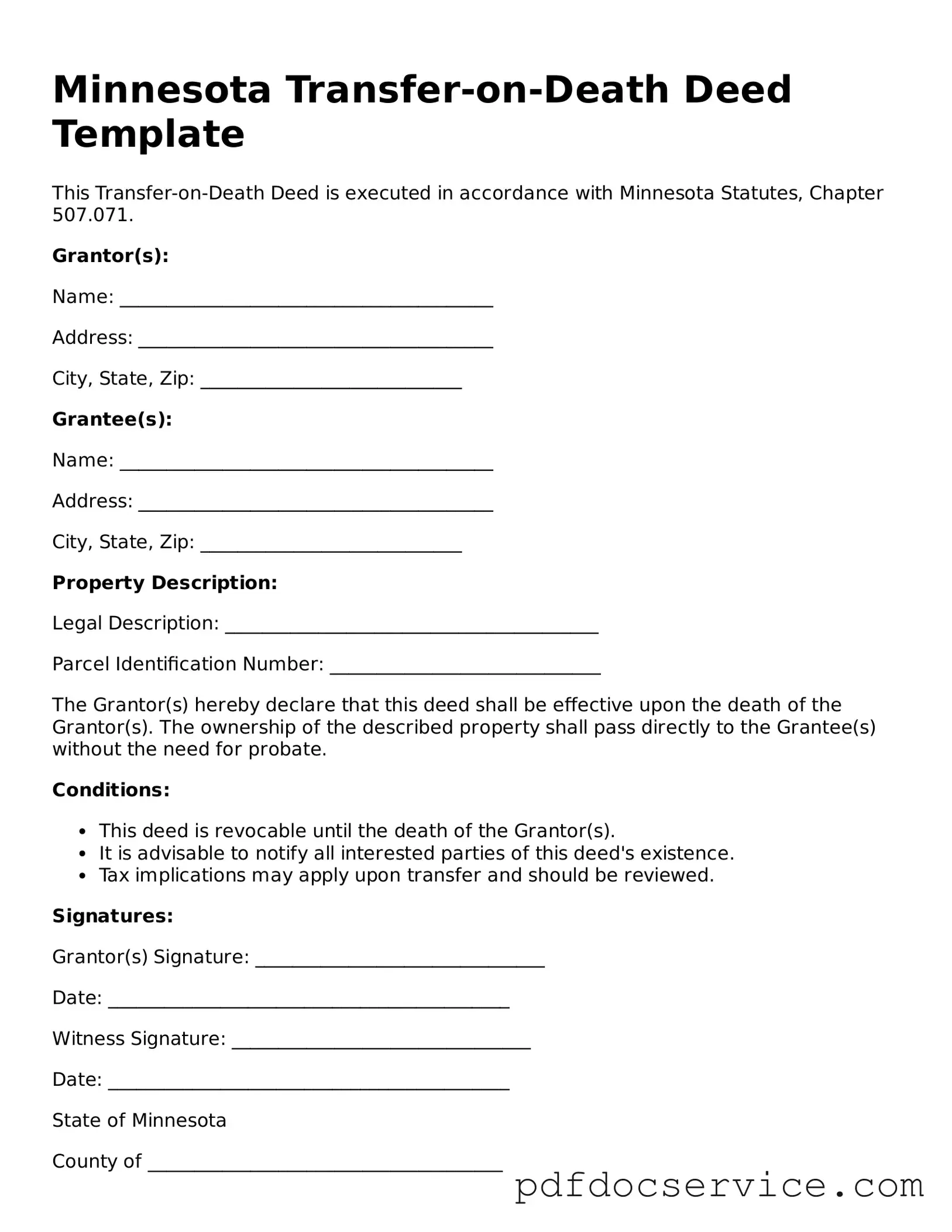Printable Transfer-on-Death Deed Template for Minnesota
The Minnesota Transfer-on-Death Deed form is a legal instrument that allows property owners to designate beneficiaries who will receive their real estate upon their death, bypassing the probate process. This form provides a straightforward way to transfer property, ensuring that assets go directly to loved ones without the delays and costs associated with traditional inheritance methods. Understanding the nuances of this deed can empower individuals to make informed decisions about their estate planning.
Open Transfer-on-Death Deed Editor
